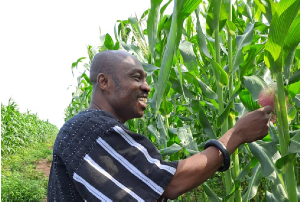Abena, a 14-year-old teenage girl, is the fifth of eight children born to her parents in Bolgatanga in the Upper East Region of Ghana. She travelled to Kumasi in April 2015 with the hope of a better standard of living.
She narrated how she was inspired by other very young girls who left Bolga to work in Kumasi and later came back with assurance of a breakthrough in life; parading around with expensive phones, clothes, foodstuff, money and other gadgets every teen dreams of.
Abena is one of many girls who are victims of rural-urban migration.
Although Ghana’s economic journey, over the last decade, has seen upward progress, the rural-urban gap remains glaring. Many young boys and girls – often unaided – leave rural towns to urban centres in search of better economic opportunities and greener pastures, not knowing what awaits them. Regrettably, most of these young people end up on the streets.
Kumasi, the capital of the Ashanti Region, is the second-largest city in Ghana with huge commercial and industrial potential which attracts a lot of young migrants who move from various rural towns in search of opportunities and better economic conditions – some temporary and others permanent.
The city prides itself as a vital trade centre for gold, cocoa and timber with a population of about 2 million inhabitants in its metropolitan area, according to the world data review.
Teenage girls are a significant part of the youth who migrate to this historic city – most of them take to working on the streets, usually as “kayayei” – a Ghanaian term that refers to female head porters or bearers.
Most kayayeis are young girls often less educated or uneducated, unskilled, and poor from the rural and semi-urban parts of the three regions in the north of Ghana.
As a result of the less paying menial jobs they mostly engage in, they often earn too little, which becomes insufficient to survive the harsh realities of urban living. Hence, these young girls take to prostitution – a situation which has become very alarming.
With high hopes that her story will be as glorious as those who motivated her, Abena begged to join her elder brother who was coming to Kumasi.
“We came with a mission to hustle, survive and make money,” Abena said with a visible expression of disappointment on her dried up, hungry-looking face.
“Because I have never been to school, I could not get any job to do so I joined the other girls of my age who were already in the ‘kayayei’ business in Kumasi. I had nowhere to sleep so I would gather empty cartons, spread them in front of a closed shop or kiosk and sleep at night. My brother visited me from time to time and encouraged me to work hard. After a month, my brother seized visiting. I had no idea where he lived and I knew no one. Soon, I got used to living on the street,” Abena added.
She continued with her narration: “I made friends who introduced me to my current sleeping place where I pay an amount of 5gh cedis rent weekly. When I moved into my new home initially, I realized that my friends always went out at night in nice clothes and returned at dawn. My roommate invited me to come with them when they were going out one night and that was when I realized that my friends were ‘kayayei’ during day time and prostitutes at night. My friend told me that kayayei alone can’t take care of my expenses so I should do what they were doing to support my upkeep. When she showed me some of the things she was able to buy from the money she made at night, it convinced me that I could also get those stuff if I joined them at night. I was at first skeptical about the shame and the way society frown on such acts, not forgetting the diminish in moral standard and the taint on the person involved. I was trained with high moral standards.”
But she sighs: “Come to think of it, what good is morals if one dies or lives in poverty. I had to battle with myself for days until I finally yielded to the act.
“During the day, I will go out to do “kayayei;” we usually charge between 1-5gh cedis depending on the weight of a luggage; then at night I charge 10gh cedis for every man I sleep with. I have done this ‘night business for seven months. I am not very happy to be doing this at night, but it pays my bills. I do not intend to do this forever, but I currently have no option so I carry goods by the day and trade sex at night,” she concluded.
Ama’s story is not any different from Abena’s. She is a 17-year-old girl who travelled from Dago, a village in the Eastern Region of Ghana, to seek greener pastures in Kumasi. She also joined the ladies who carried goods for money.
Recounting her ordeal, Ama said, “I used to walk the length and breadth of Adum, Kejetia and Central Market looking for customers but unfortunately business was mostly not in my favour. Sometimes I could starve all day. I could not return to my hometown because I had no money.
“One night, tired, hungry and thinking of what to eat after a fruitless day, a strange man approached me and promised to buy me food and I agreed. He took me to a pub and I ate to my satisfaction. After the food and drinks, he took me to a nearby room and forcefully had sex with me. That is how he initiated me into prostitution and since then I have been working at night for this man. He pays my rent together with other girls.”
She hinted that, at a point, she wanted to learn hairdressing but the nature of her job wouldn’t let her. “I could not do it; my work is extremely stressful. I have tried my best to learn, but anywhere I go to, they sack me because I am always sleeping at work,” she said.
She stressed: “I really want to learn a trade, I want to have my own salon, but I have to earn enough money to rent a place for myself and that’s why I still engage in prostitution.”
Dr Georgina Oduro, a Senior Lecturer at the Department of Sociology and Anthropology, University of Cape Coast (UCC), in her research which was undertaken to assess the phenomenon of child prostitution in the country, indicated that children between the ages of 11 and 17 years were involved in the act.
Some of the children, according to the findings of the research, entered the illegal trade of selling their body through self-initiation, friends and family members to raise revenue to start a trade.
Dr Oduro expressed worry about the increasing rate of child prostitution in the country and called for the adoption of a multi-sectoral approach in addressing the issue.
In an interview with the president of the Ghana Association of Head Porters, Adiza Isaaku, popularly known as Adiza Zongo Pioneer, she denies that she is aware that some girls are kayayei by day and prostitutes by night.
Calls for an interview with the Regional Social Welfare Director have been postponed on several occasions. Visits to the regional office of the department also yielded no results as persons available noted that they weren’t in the best position to talk in the absence of the director.
Is this just the tale of two isolated young ladies who have not had luck smile on them? Do these girls love sex so much that they trade their bodies at night for paltry fees after long days of carrying heavy weights on the busy and crowded streets of Kumasi’s central business district?
Are these not young ladies whose search for greener pastures has led them to the unimaginable, deplorable and desperate situation where they have to sleep with total strangers of varying statures against their conscience and will?
According to Abena and Ama, more than half of what they earn end up in the hands of their paymasters with the remaining “coins” spent on rent and food, leaving them in a vicious cycle of poverty, making it extremely difficult to quit since there barely exist decent alternatives of livelihood for such unschooled and unskilled teens.
Many of the kayayeis want to get out of this inhuman and demeaning way of survival. And their circumstances are one that demands not mere sympathy or pity, but one that provokes the authorities and stakeholders of young girls and boys across the youth spectrum to put in place drastic measures to ameliorate their collective misery.
Stakeholders need to come to the aid of these teens and the time is now.
General News of Monday, 12 August 2019
Source: face2faceafrica.com













